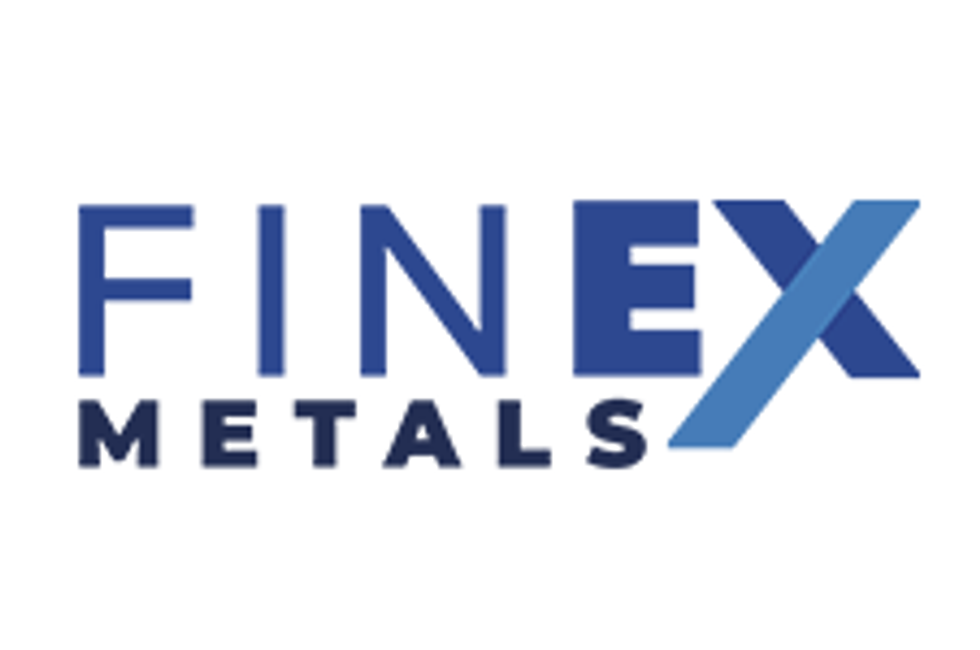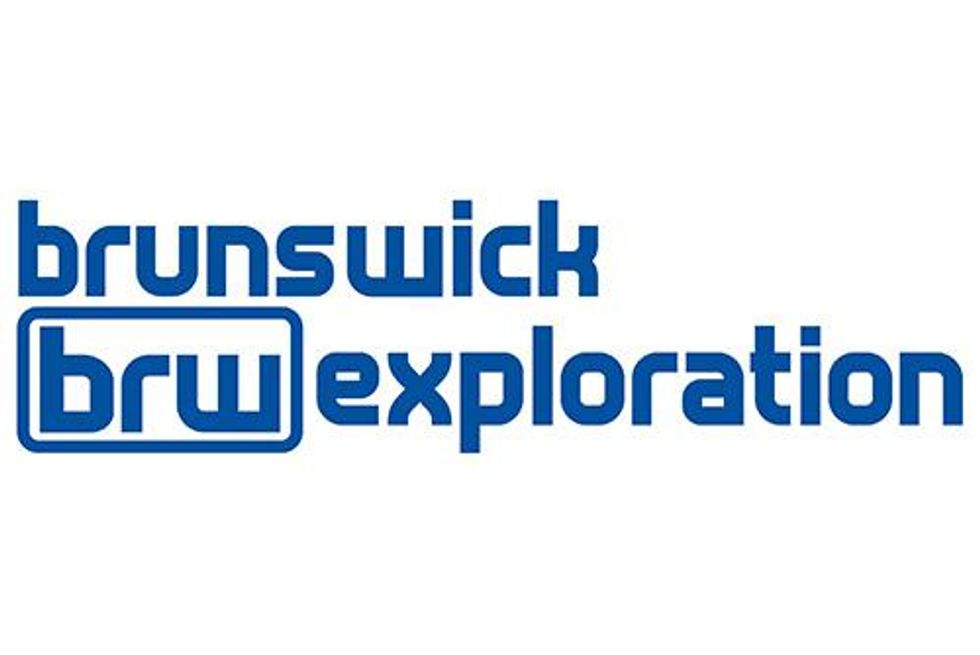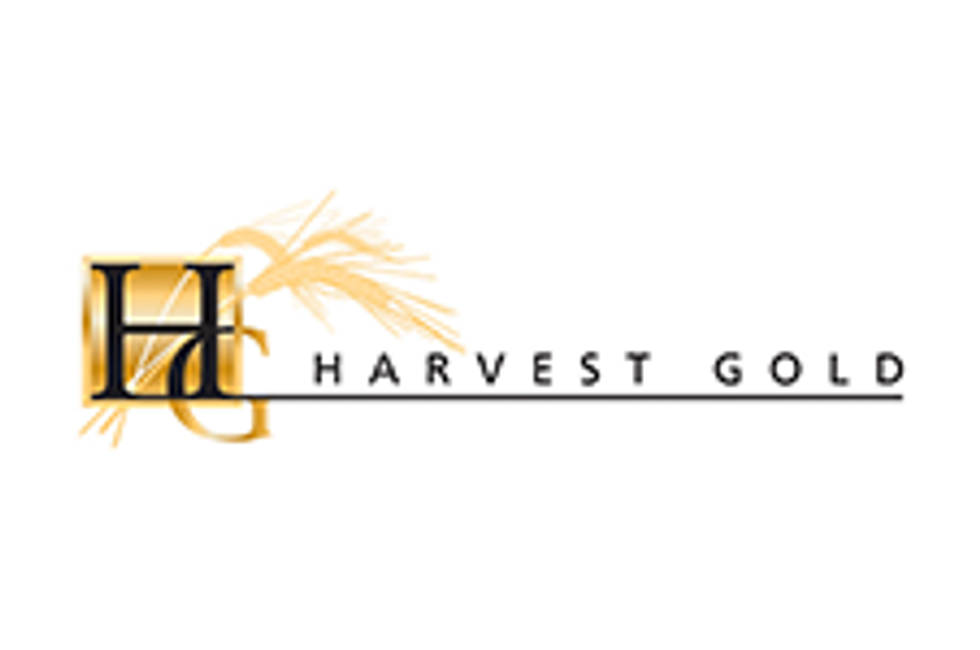Osisko Mining Inc. (TSX:OSK) (“Osisko” or the “Corporation”) is pleased to provide new results from the ongoing drill program at its 100% owned Windfall Lake gold project located in Urban Township, Abitibi, Québec. The current 400,000 metres drill program combines definition drilling in Zone 27, definition drilling above the Red Dog intrusion (“Red Dog”), expansion …
Highlights from the new results include: 63.2 g/t Au over 7.7 metres (23.7 g/t Au over 7.7 metres cut) in DDH OSK-OBM-16-609; 8.44 g/t Au over 12.0 metres in DDH OSK-W-847; 9.18 g/t Au over 10.0 metres in DDH OSK-W-17-833-W2; 30.1 g/t Au over 3.0 metres in DDH OSK-W-17-847-W1; 29.8 g/t Au over 2.0 metres in DDH OSK-W-17-847; 24.4 g/t Au over 2.5 metres in DDH OSK-W-17-855; 20.4 g/t Au over 3.0 metres in DDH OSK-W-17-847; 13.4 g/t Au over 4.8 metres in DDH OSK-W-17-871; 18.7 g/t Au over 3.5 metres in DDH OSK-W-17-844; and 18.6 g/t Au over 3.5 metres in DDH OSK-W-17-854-W2. Maps showing hole locations and full analytical results are available at www.osiskomining.com.
| Hole No. | From (m) | To (m) | Interval (m) | Au (g/t) uncut | Au (g/t) cut to 100 g/t | Zone | Corridor |
| OSK-EAG-13-494 | 1013.0 | 1016.0 | 3.0 | 5.70 | FW3 | Underdog | |
| OSK-OBM-16-609 | 654.3 | 662.0 | 7.7 | 63.2 | 23.7 | FW3U | Underdog |
| including | 656.0 | 658.0 | 2.0 | 18.9 | |||
| including | 660.0 | 662.0 | 2.0 | 222 | 69.7 | ||
| OSK-W-17-813-W1 | 626.2 | 629.1 | 2.9 | 9.67 | CN1 | Caribou | |
| including | 626.2 | 627.0 | 0.8 | 30.8 | |||
| OSK-W-17-818 | 99.0 | 101.0 | 2.0 | 5.86 | Vein | Zone 27 | |
| including | 100.0 | 100.4 | 0.4 | 29.0 | |||
| OSK-W-17-821-W1 | 905.0 | 907.0 | 2.0 | 7.93 | FW0 | Underdog | |
| including | 905.0 | 906.0 | 1.0 | 12.2 | |||
| OSK-W-17-833 | 540.0 | 546.3 | 6.3 | 5.91 | CS1 | Caribou | |
| including | 544.0 | 546.3 | 2.3 | 13.2 | |||
| OSK-W-17-833-W1 | 534.0 | 536.0 | 2.0 | 8.27 | CS1 | Caribou | |
| including | 534.0 | 534.5 | 0.5 | 25.4 | |||
| 815.5 | 818.0 | 2.5 | 5.60 | FW0 | Underdog | ||
| including | 815.5 | 816.0 | 0.5 | 21.6 | |||
| OSK-W-17-833-W2 | 534.0 | 544.0 | 10.0 | 9.18 | CS1 | Caribou | |
| including | 542.0 | 544.0 | 2.0 | 39.0 | |||
| OSK-W-17-842 | 505.5 | 508.0 | 2.5 | 3.79 | CS1 HW | Caribou | |
| including | 505.5 | 505.9 | 0.4 | 18.4 | |||
| OSK-W-17-844 | 568.7 | 571.2 | 2.5 | 8.14 | Wolf 2 | Caribou | |
| including | 569.7 | 570.1 | 0.4 | 28.2 | |||
| 665.1 | 668.6 | 3.5 | 18.7 | Wolf | Caribou | ||
| including | 668.0 | 668.6 | 0.6 | 69.4 | |||
| OSK-W-17-847 | 601.0 | 603.0 | 2.0 | 29.8 | CS1 | Caribou | |
| 1162.0 | 1174.0 | 12.0 | 8.44 | FW3 | Underdog | ||
| including | 1169.0 | 1170.0 | 1.0 | 32.9 | |||
| 1208.0 | 1211.0 | 3.0 | 20.4 | FW3 FW | Underdog | ||
| OSK-W-17-847-W1 | 584.0 | 586.0 | 2.0 | 5.82 | CS1 HW | Caribou | |
| including | 585.0 | 586.0 | 1.0 | 10.7 | |||
| 606.0 | 609.0 | 3.0 | 30.1 | CS1 | Caribou | ||
| including | 608.0 | 609.0 | 1.0 | 81.9 | |||
| 643.0 | 645.0 | 2.0 | 4.08 | CS1 FW | Caribou | ||
| including | 644.5 | 645.0 | 0.5 | 13.4 | |||
| OSK-W-17-854 | 280.0 | 282.0 | 2.0 | 12.5 | Caribou | Caribou | |
| including | 280.8 | 282.0 | 1.2 | 19.9 | |||
| OSK-W-17-854-W2 | 795.7 | 799.2 | 3.5 | 18.6 | FW3U | Underdog | |
| including | 798.1 | 798.6 | 0.5 | 80.3 | |||
| OSK-W-17-855 | 269.0 | 271.5 | 2.5 | 24.4 | New | Caribou | |
| including | 270.5 | 271.5 | 1.0 | 46.6 | |||
| OSK-W-17-855-W1 | 916.3 | 919.5 | 3.2 | 3.79 | FW3 | Underdog | |
| including | 919.0 | 919.5 | 0.5 | 15.8 | |||
| OSK-W-17-858-W1 | 781.0 | 784.0 | 3.0 | 11.1 | FW3U | Underdog | |
| including | 781.0 | 782.5 | 1.5 | 18.3 | |||
| OSK-W-17-864 | 305.0 | 308.0 | 3.0 | 4.17 | Caribou | Caribou | |
| 518.0 | 524.0 | 6.0 | 8.22 | Z27 | Zone 27 | ||
| 768.4 | 770.7 | 2.3 | 4.15 | FW3U | Underdog | ||
| including | 769.3 | 769.6 | 0.3 | 15.1 | |||
| OSK-W-17-866 | 347.8 | 350.4 | 2.6 | 3.49 | New | Caribou | |
| 769.7 | 772.2 | 2.5 | 10.2 | Underdog | Underdog | ||
| including | 771.6 | 772.2 | 0.6 | 40.0 | |||
| 1138.0 | 1140.0 | 2.0 | 13.9 | FW3 | Underdog | ||
| 1168.4 | 1172.9 | 4.5 | 4.50 | FW3 FW | Underdog | ||
| including | 1168.4 | 1168.9 | 0.5 | 19.9 | |||
| 1229.2 | 1231.5 | 2.3 | 14.0 | FW3 FW | Underdog | ||
| including | 1229.2 | 1229.9 | 0.7 | 41.1 | |||
| OSK-W-17-871 | 152.0 | 156.8 | 4.8 | 13.4 | Caribou | Caribou | |
| including | 155.5 | 156.0 | 0.5 | 100 | |||
| 177.3 | 179.9 | 2.6 | 3.47 | Caribou | Caribou | ||
| including | 177.3 | 177.6 | 0.3 | 17.4 | |||
| OSK-W-17-880 | 461.4 | 463.9 | 2.5 | 5.38 | Z27 | Zone27 | |
| OSK-W-17-901 | 122.5 | 124.6 | 2.1 | 16.2 | Caribou | Caribou | |
| including | 123.1 | 123.9 | 0.8 | 34.7 |
| Notes: | |
| 1. True widths are estimated at 65 – 80% of the reported core length interval. See “Quality Control” below. | |
| 2. Definitions: FW = foot wall; HW = hanging wall. | |
| Hole Number | Azimuth (°) | Dip (°) | Length (m) | UTM E | UTM N | Section |
| OSK-EAG-13-494 | 331 | -60 | 707 | 452731 | 5434537 | 2750 |
| OSK-OBM-16-609 | 331 | -49 | 738 | 452459 | 5434642 | 2550 |
| OSK-W-17-813-W1 | 332 | -63 | 662 | 452610 | 5434457 | 2600 |
| OSK-W-17-818 | 329 | -61 | 165 | 451868 | 5434630 | 2050 |
| OSK-W-17-821-W1 | 334 | -66 | 1416 | 452738 | 5434475 | 2725 |
| OSK-W-17-833 | 330 | -58 | 1149 | 452597 | 5434395 | 2550 |
| OSK-W-17-833-W1 | 331 | -57 | 1173 | 452597 | 5434395 | 2550 |
| OSK-W-17-833-W2 | 331 | -57 | 1244 | 452595 | 5434394 | 2550 |
| OSK-W-17-842 | 330 | -60 | 948 | 452509 | 5434390 | 2425 |
| OSK-W-17-844 | 333 | -57 | 1092 | 452727 | 5434546 | 2750 |
| OSK-W-17-847 | 334 | -69 | 1347 | 452644 | 5434430 | 2625 |
| OSK-W-17-847-W1 | 334 | -69 | 1134 | 452644 | 5434430 | 2625 |
| OSK-W-17-854 | 331 | -53 | 846 | 452481 | 5434592 | 2550 |
| OSK-W-17-854-W2 | 331 | -53 | 364 | 452481 | 5434592 | 2550 |
| OSK-W-17-855 | 332 | -65 | 717 | 452310 | 5434383 | 2300 |
| OSK-W-17-855-W1 | 334 | -64 | 1197 | 452310 | 5434383 | 2300 |
| OSK-W-17-858-W1 | 331 | -53 | 915 | 452527 | 5434612 | 2600 |
| OSK-W-17-864 | 330 | -53 | 813 | 452467 | 5434584 | 2525 |
| OSK-W-17-866 | 332 | -57 | 1275 | 452631 | 5434283 | 2525 |
| OSK-W-17-871 | 328 | -54 | 533 | 452402 | 5434624 | 2500 |
| OSK-W-17-880 | 327 | -50 | 813 | 452426 | 5434567 | 2500 |
| OSK-W-17-901 | 328 | -55 | 800 | 452392 | 5434637 | 2500 |
Underdog Zone
OSK-EAG-13-494 intersected 5.70 g/t Au over 3.0 metres. Mineralization consists of 3% pyrite stringers and 7 to 10% disseminated pyrite. The host rock is a strongly sericitized and bleached intermediate to mafic volcanic unit. This interval extends the FW3 Zone 75 metres east of OSK-W-16-708-W1 (3.74 g/t Au over 3.0 metres, previously released August 31, 2016).
OSK-OBM-16-609 intersected 63.2 g/t Au over 7.7 metres (23.7 g/t Au over 7.7 metres cut) including 18.9 g/t Au over 2.0 metres and 222 g/t Au over 2.0 metres. Mineralization consists of several mineralized bands with 20% pyrite with traces of chalcopyrite and sphalerite. The host intermediate volcanic unit is sheared, foliated and highly altered (sericitized and bleached) with 1 to 10% disseminated pyrite and 1 to 10% pyrite-tourmaline stringers, with local semi-massive pyrite bands (5 to 15 centimetre). This intersection extends the FW3 Upper Zone 50 metres northeast of OSK-W-17-663-W1 (4.64 g/t Au over 2.0 metres, previously released May 30, 2017).
OSK-W-17-821-W1 intersected 7.93 g/t Au over 2.0 metres, including 12.2 g/t Au over 1.0 metre. Mineralization consists of 2% pyrite stringers hosted in a moderately bleached fragmental porphyritic intrusion. This interval corresponds to the FW0 Zone, 60 metres south-southwest of previously reported OBM-16-614-W1 that returned 4.96 g/t Au over 2.9 metres (previously released July 11, 2016).
OSK-W-17-833-W1 intersected 5.60 g/t Au over 2.5 metres, including 21.6 g/t Au over 0.5 metres. Mineralization is mainly 2% pyrite as stringers with up to 40% quartz-tourmaline stringers and 3% disseminated pyrite. The host unit is a fragmental porphyritic intrusion, highly sericitized, silicified and bleached. This interval corresponds to the FW0 Zone, 30 metres northeast of OSK-W-16-706-W1 which returned 34.6 g/t Au over 2.5 metres (previously released September 16, 2016).
OSK-W-17-847 returned two intersections: FW3 – 8.44 g/t Au over 12.0 metres (including 32.9 g/t Au over 1.0 metre), and FW3 FW – 20.4 g/t Au over 3.0 metres. FW3 mineralization contains 1 to 7% pyrite stringers, 1 to 15% disseminated pyrite, traces of chalcopyrite, and local visible gold hosted in a strongly altered (sericite and silica) blue quartz-eye porphyritic intrusion. The FW3 FW mineralization is composed of 10 to 15% pyrite tourmaline stringers, trace chalcopyrite and local visible gold. The first intersection corresponds to the FW3 Zone, 35 metres to the southwest of OSK-W-16-706-W2 which returned 4.95 g/t Au over 3.5 metres (previously released October 15, 2016). The second interval extended the FW3 corridor, 165 metres to the southwest of OSK-W-17-821 which returned 9.27 g/t Au over 3.3 metres (previously released May 30, 2017).
OSK-W-17-854-W2 intersected 18.6 g/t Au over 3.5 metres, including 80.3 g/t Au over 0.5 metres. Mineralization comprises 5% quartz tourmaline stringers with 1% disseminated pyrite and 3% disseminated chalcopyrite, with crustiform veins. The host rock is a strongly silicified, carbonatized and locally sericitized intermediate volcanic unit. This intersection is part of the infill program in the FW3 Upper Zone, located 25 metres southwest of OSK-W-17-854-W1 which returned 4.65 g/t Au over 2.8 metres (previously released July 19, 2017) and 25 metres vertically under OSK-W-17-830 which returned 7.56 g/t Au over 2.0 metres (previously released May 3, 2017).
OSK-W-17-855-W1 intersected 3.79 g/t Au over 3.2 metres (including 15.8 g/t Au over 0.5 metres). Mineralization is composed of 70 to 80% disseminated pyrite and 3 to 45% pyrite-tourmaline stringers hosted in a blue quartz-rich porphyritic intrusion. This intersection is part of the FW3 Zone and extends it 80 metres to the southwest of previously reported OSK-W-17-789-W2 (25.6 g/t Au over 3.1 metres; July 19, 2017).
OSK-W-17-858-W1 intersected 11.1 g/t Au over 3.0 metres, including 18.3 g/t Au over 1.5 metres. Mineralization consists of a mix of crustiform veins and 20 to 40% semi-massive pyrite stringers hosted in bleached and highly silicified intermediate volcanic units. This intersection is part of the infill program in the FW3 Upper Zone, located 30 metres northeast of EAG-11-269 which returned 7.71 g/t Au over 6.9 metres (previously released March 16, 2016) and 40 metres to the north northeast of OSK-W-17-466-W1 which returned 8.52 g/t Au over 5.2 metres (previously released May 24, 2017).
OSK-W-17-864 intersected 4.15 g/t Au over 2.3 metres, including 15.1 g/t Au over 0.3 metres. Mineralization comprises up to 3% disseminated pyrite and 3 to 5% pyrite stringers with ptygmatic tourmaline veins hosted in an intermediate volcanic unit. This intersection is part of the infill program in the FW3 Upper Zone, located 30 metres to the southwest of OSK-W-17-830 that returned 7.56 g/t Au over 2.0 metres and 30 metres east of EAG-11-254 (24.8 g/t Au over 6.8 metres; previously released March 14, 2016).
OSK-W-17-866 returned four intersections in the Underdog Corridor: 1) 130 m southeast of FW0, 10.2 g/t Au over 2.5 metres, including 40.0 g/t Au over 0.6 metres; 2) in the FW3 Zone, 13.9 g/t Au over 2.0 metres; 3) in the FW3 FW Zone, 4.5 g/t Au over 4.5 metres, including 19.9 g/t Au over 0.5 metres; and 4) 14.0 g/t Au over 2.3 metres, including 41.1 g/t Au over 0.7 metres, in the FW3 FW Zone. Mineralization in the first Underdog interval consists of 2% disseminated pyrite and up to 8% pyrite stringers hosted in a fragmental porphyritic intrusion. For the FW3 FW Zones, mineralization is 1 to 4% disseminated pyrite and trace to 4% pyrite stringers hosted in a quart-eye rich porphyritic felsic intrusion. For the FW3 Zone, the mineralization is composed of trace to 7% disseminated pyrite and irregular stringers (trace to 4%) with local chalcopyrite. The FW3 Zone hit above OSK-W-16-706-W1 (16.6 g/t Au over 8.9 metres; previously released September 19, 2016) and confirms an eastward lateral extension of the FW3 FW Zone (FW3 corridor). The intersection sits between FW3 FW and OSK-W-17-789-W2 (25.6 g/t Au over 3.1 metres; previously reported July 19, 2017) at 70 metres to the east-northeast of OSK-W-17-789-W2.
Caribou Zone
OSK-W-17-813-W1 intersected 9.67 g/t Au over 2.9 metres, including 30.8 g/t Au over 0.8 metres. Mineralization consists of 2% pyrite stringers and trace of disseminated pyrite. The host rock is a contact between a porphyritic felsic intrusion and an intermediate volcanic unit. This interval corresponds to the CN1 extension.
OSK-W-17-833 intersected 5.91 g/t Au over 6.3 metres, including 13.2 g/t Au over 2.3 metres. Mineralization comprises 1% disseminated pyrite, 4% pyrite stringers, 1% pyrite-tourmaline stringers and up to 1% chalcopyrite and semi-massive pyrite within a 50 cm ptygmatic tourmaline veins. The host rock is a fragmental intermediate volcanic unit, medium to strongly sericitized. This intersection corresponds to the CS1 corridor, 25 metres northwest of previously reported OSK-W-16-706-W1 that returned 5.75 g/t Au over 16.5 metres (uncut) (previously released June 19, 2016).
OSK-W-17-833-W1 intersected 8.27 g/t Au over 2.0 metres, including 25.4 g/t Au over 0.5 metres. Mineralization contains 3 to 6% disseminated pyrite and 1 to 2% pyrite stringers. The host rock is a bleached and medium to strongly sericitized intermediate volcanic unit. This interval matches with the CS1 corridor, 25 metres east of OSK-W-16-706 that returned 8.65 g/t Au over 3.0 metres (previously released August 31, 2016).
OSK-W-17-833-W2 intersected 9.18 g/t Au over 10.0 metres, including 39.0 g/t Au over 2.0 metres. The mineralization is composed of 10 to 15% pyrite stringers and 3 to 5% disseminated pyrite in a moderately bleached and sericitized intermediate volcanic unit. This interval coincides with the CS1 corridor, 25 metres southwest of OSK-W-17-706-W1 that returned 5.75 g/t Au over 16.5 metres (uncut) (previously released June 19, 2016)
OSK-W-17-842 intersected 3.79 g/t Au over 2.5 metres, including 18.3 g/t Au over 0.4 metres. Mineralization consists of 10% pyrite stringers and 1% quartz-tourmaline veins, with 20 cm of semi-massive pyrite stringers. This interval is hosted in a strongly bleached and sericitized intermediate volcanic unit in contact with a large quartz-eye porphyritic felsic intrusion, and coincides with the CS1 HW Zone, 50 metres southwest of OSK-W-17-823-W1 that returned 8.05 g/t Au over 5.4 metres (previously released April 4, 2017).
OSK-W-17-844 returned two intersections in the Wolf zones: Wolf 2 – 8.14 g/t Au over 2.5 metres (including 28.2 g/t Au over 0.4 metres) and Wolf – 18.7 g/t Au over 3.5 metres, (including 69.4 g/t Au over 0.6 metres). The Wolf 2 interval has 5% pyrite stringers within an intermediate volcanic unit. The Wolf interval corresponds to 3-5% pyrite stringers with local visible gold, 1 to 2% disseminated pyrite, and ptygmatic tourmaline veins hosted within a sericitic altered intermediate volcanic unit. This interval is related to Wolf 2 (between CS3 and Wolf), 35 metres west of OSK-W-16-718 which returned 8.5 g/t Au over 4.7 metres (previously released September 19, 2016).
OSK-W-17-847 intersected 29.8 g/t Au over 2.0 metres. Mineralization is composed of 4% pyrite stringers and disseminated pyrite hosted within an intermediate volcanic unit. This interval corresponds to the CS1 corridor, 25 metres east of previously reported OSK-W-17-847-W1 that returned 30.1 g/t Au over 3.0 metres (this press release).
OSK-W-17-847-W1 returned three intersections: 5.82 g/t Au over 2.0 metres, including 10.7 g/t Au over 1.0 metre, corresponding to CS1 HW; 30.1 g/t Au over 3.0 metres, including 81.9 g/t Au over 1.0 metre, corresponding to CS1 and 4.08 g/t Au over 2.0 metres, including 13.4 g/t Au over 0.5 metres, corresponding to CS1 FW. The first intersection includes 2% pyrite stringers and disseminated pyrite in a weakly chloritized and silicified mafic intrusion. The second interval corresponds to a weakly to moderately sericitized intermediate volcanic rock containing up to 5 % pyrite stringers and 2% disseminated pyrite. The third intersection corresponds to 1% pyrite stringers and disseminated pyrite within a weakly chloritized and silicified intermediate volcanic unit. The second interval stands 25 metres southwest of OSK-W-17-847 that returned 29.8 g/t Au over 2.0 metres (this press release).
OSK-W-17-854 intersected 12.5 g/t Au over 2.0 metres, including 19.9 g/t Au over 1.2 metres. Mineralization consists of a semi-massive pyritic interval within a weakly sericitized and high silica flood zone at the contact between a fragmented rhyolite and a quartz-eye porphyritic felsic intrusion. This interval is within the Caribou Corridor, 35 metres east of OSK-W-17-864 that returned 4.17 g/t Au over 3.0 metres (this press release).
OSK-W-17-855 intersected 24.4 g/t Au over 2.5 metres, including 46.6 g/t Au over 1.0 metre. Mineralization occurs in an intermediate volcanic rock with disseminated pyrite, pyrite stringers and semi-massive sulphides (up to 65%) with traces of chalcopyrite. This interval represents new values in the south part of the Caribou Corridor, 40 metres southeast of CS1.
OSK-W-17-864 intersected 4.17 g/t Au over 3.0 metres. Mineralization is observed in felsic intrusive dikes as semi-massive to massive sulphides (up to 80% pyrite) over 1 m, 1 to 10% pyrite stringers, up to 30% disseminated pyrite, and minor quartz-tourmaline veins. The intersection corresponds to the Caribou Corridor, 35 metres west of previously reported OSK-W-17-854 that returned 12.5 g/t Au over 2.0 metres (this press release).
OSK-W-17-866 intersected 3.49 g/t Au over 2.6 metres. This interval is a poor quartz-eye porphyritic felsic intrusion with 3 to 5% of disseminated pyrite associated with veinlets of sericite and pervasive chlorite alteration. This interval is 200 metres south-east of Caribou and corresponds to a potential new zone.
OSK-W-17-871 returned two intersections in the Caribou Corridor: 13.4 g/t Au over 4.8 metres, including 100 g/t Au over 0.5 metres, and 3.47 g/t Au over 2.6 metres, including 17.4 g/t Au over 0.3 metres. The first intersection is in a bleached to strong sericitized large quartz-eye felsic intrusion located before a fault zone and contains 7% pyrite stringers. Locally an altered (strong sericite and weak silica and chlorite) felsic volcanic unit is observed with 5% disseminated pyrite in a brecciated horizon. The second intersection is a brecciated contact between a felsic porphyritic and an intermediate intrusion with 5 to 7% pyrite stringers and 1 to 2% disseminated pyrite. First interval is 25 metres northeast of OSK-W-17-901 that returned 16.2 g/t Au over 2.1 metres (this press release). The second interval is 10 metres northeast of previously reported OBM-16-664 which returned 7.34 g/t Au over 3.0 metres (previously released June 16, 2016).
OSK-W-17-901 intersected 16.2 g/t Au over 2.1 metres, including 34.7 g/t Au over 0.8 metres. This interval is within a moderately altered zone containing pervasive silica, strong pervasive sericite and weak fracture-filling carbonates within a large quartz-eye porphyritic felsic intrusion. Mineralization occurs mainly in massive stringers accompanied by tourmaline veinlets and between 20 to 40% pyrite stringers. This interval corresponds to the Caribou Zone proper, 25 metres southwest of OSK-W-17-871 that returned 13.4 g/t Au over 4.8 metres (this press release).
Zone 27
OSK-W-17-818 intersected 5.86 g/t Au over 2.0 metres, including 29.0 g/t Au over 0.4 metres. Mineralization consists of quartz veins with trace disseminated pyrite and 8% of pyrite stringers hosted within a porphyritic intermediate intrusion.
OSK-W-17-864 intersected 8.22 g/t Au over 6.0 metres, including 22.7 g/t Au over 1.0 metre and 14.9 g/t Au over 1.7 metres. Mineralization occurs in a highly silicified intermediate volcanic unit and is composed of up to 20% pyrite associated with silicate flooding and up to 10% disseminated pyrite and traces disseminated chalcopyrite. The host rock is a contact between a large quartz-eye porphyritic felsic intrusion and an altered intermediate volcanic unit. This interval corresponds to Z27 Zone, 50 metres northeast of OBM-16-664 which returned 4.64 g/t Au over 10.2 metres (previously released June 16, 2016).
OSK-W-17-880 intersected 5.38 g/t Au over 2.5 metres. Mineralization is composed of up to 20% pyrite in intermediate volcanic rock units and 5% pyrite in a silicified felsic intrusion. This interval coincides to the Z27 Zone, 27 metres southwest of OSK-W-17-871 that returned 3.18 g/t Au over 2.7 metres (this press release).
Qualified Person
The scientific and technical content of this news release has been reviewed. prepared and approved by Mr. Louis Grenier. M.Sc.A.. P.Geo. (OGQ 800). Project Manager of the Windfall Lake gold project. who is a “Qualified Person” as defined by National Instrument 43-101 – Standards of Disclosure for Mineral Projects (“NI 43-101”).
Quality Control and Reporting Protocols
True width determinations are estimated at 65 – 80% true core lengths. Assay are uncut except where indicated. and calculated intervals are reported over a minimum length of 2 metres using a lower cutoff of 3 g/t Au. All NQ core assays reported were obtained by either 1 kilogram whole rock metallic screen/fire assay or standard 50 gram fire-assaying with AA or gravimetric finish at ALS Laboratories in Val d’Or. Québec or Sudbury. Ontario. or Bureau Veritas in Timmins. Ontario. using the same protocols. The 1 kilogram metallic screen assay method is selected by the geologist when samples contain coarse gold or present a higher percentage of pyrite than surrounding intervals. Selected samples are also analyzed for multi-elements. including silver. using an Aqua Regia-ICP-AES method at ALS laboratories. Drill program design. Quality Assurance/Quality Control and interpretation of results is performed by qualified persons employing a Quality Assurance/Quality Control program consistent with NI 43-101 and industry best practices. Standards and blanks are included with every 20 samples for Quality Assurance/Quality Control purposes by the Corporation as well as the lab. Approximately 5% of sample pulps are sent to secondary laboratories for check assays.
About the Windfall Lake Gold Deposit
The Windfall Lake gold deposit is located between Val-d’Or and Chibougamau in the Abitibi region of Québec, Canada. The mineral resource defined by the previous operator comprises 2,762,000 tonnes at 8.42 g/t Au (748,000 ounces) in the indicated category and 3,512,000 tonnes at 7.62 g/t Au (860,000 ounces) in the inferred category (sourced from a technical report dated June 10, 2015 entitled “Preliminary Economic Assessment of the Windfall Lake Gold Property, Québec, Canada” with an effective date of April 28, 2015, prepared in accordance with NI 43-101). The Windfall Lake gold deposit is currently one of the highest grade resource-stage gold projects in Canada. The bulk of the mineralization occurs in the Main Zone, a southwest/northeast trending zone of stacked mineralized lenses, measuring approximately 600 metres wide and at least 1,400 metres long. The deposit is well defined from surface to a depth of 500 metres, and remains open along strike and at depth. Mineralization has been identified only 30 metres from surface in some areas and as deep as 870 metres in others, with significant potential to extend mineralization up and down-plunge and at depth.
About Osisko Mining Inc.
Osisko is a mineral exploration company focused on the acquisition. exploration. and development of precious metal resource properties in Canada. Osisko holds a 100% in the high-grade Windfall Lake gold deposit located between Val-d’Or and Chibougamau in Québec and holds a 100% undivided interest in a large area of claims in the surrounding Urban Barry area (82.400 hectares). a 100% interest in the Marban project located in the heart of Québec’s prolific Abitibi gold mining district. and properties in the Larder Lake Mining Division in northeast Ontario. including the Jonpol and Garrcon deposits on the Garrison property. the Buffonta past producing mine and the Gold Pike mine property. The Corporation also holds interests and options in a number of additional properties in northern Ontario. Osisko continues to be well financed with approximately $190 million in cash and investments.
Cautionary Note Regarding Forward-Looking Information
This news release contains “forward-looking information” within the meaning of the applicable Canadian securities legislation that is based on expectations. estimates. projections and interpretations as at the date of this news release. The information in this news release about the Windfall Lake gold deposit being one of the highest grade resource-stage gold projects in Canada; the current 400.000 metre drill program at Red Dog; the significance of new results from the ongoing drill program at the Windfall Lake gold project; the significance of assay results presented in this press release; the type of drilling included in the drill program (definition drilling above Red Dog. expansion drilling above and below Red Dog. expansion drilling to the NE of the main deposit. and exploration drilling on the greater deposit and Urban-Barry project area); potential mineralization; the potential to extend mineralization up and down-plunge and at depth at the Windfall Lake gold deposit; the ability to realize upon any mineralization in a manner that is economic; the ability to complete any proposed exploration activities and the results of such activities. including the continuity or extension of any mineralization; and any other information herein that is not a historical fact may be “forward-looking information”. Any statement that involves discussions with respect to predictions, expectations, interpretations, beliefs, plans, projections, objectives, assumptions, future events or performance (often but not always using phrases such as “expects”, or “does not expect”, “is expected”, “interpreted”, “management’s view”, “anticipates” or “does not anticipate”, “plans”, “budget”, “scheduled”, “forecasts”, “estimates”, “believes” or “intends” or variations of such words and phrases or stating that certain actions, events or results “may” or “could”, “would”, “might” or “will” be taken to occur or be achieved) are not statements of historical fact and may be forward-looking information and are intended to identify forward-looking information.
This forward-looking information is based on reasonable assumptions and estimates of management of the Corporation. at the time it was made. involves known and unknown risks. uncertainties and other factors which may cause the actual results. performance or achievements of Osisko to be materially different from any future results. performance or achievements expressed or implied by such forward-looking information. Such factors include. among others. risks relating to the ability of exploration activities (including drill results) to accurately predict mineralization; errors in management’s geological modelling; the ability of Osisko to complete further exploration activities. including drilling; property interests in the Windfall Lake gold project; the ability of the Corporation to obtain required approvals and complete transactions on terms announced; the results of exploration activities; risks relating to mining activities; the global economic climate; metal prices; dilution; environmental risks; and community and non-governmental actions. Although the forward-looking information contained in this news release is based upon what management believes. or believed at the time. to be reasonable assumptions. Osisko cannot assure shareholders and prospective purchasers of securities of the Corporation that actual results will be consistent with such forward-looking information. as there may be other factors that cause results not to be as anticipated. estimated or intended. and neither Osisko nor any other person assumes responsibility for the accuracy and completeness of any such forward-looking information. Osisko does not undertake. and assumes no obligation. to update or revise any such forward-looking statements or forward-looking information contained herein to reflect new events or circumstances. except as may be required by law.
President and Chief Executive Officer
(416) 363-8653





